Williams launch their new FW31
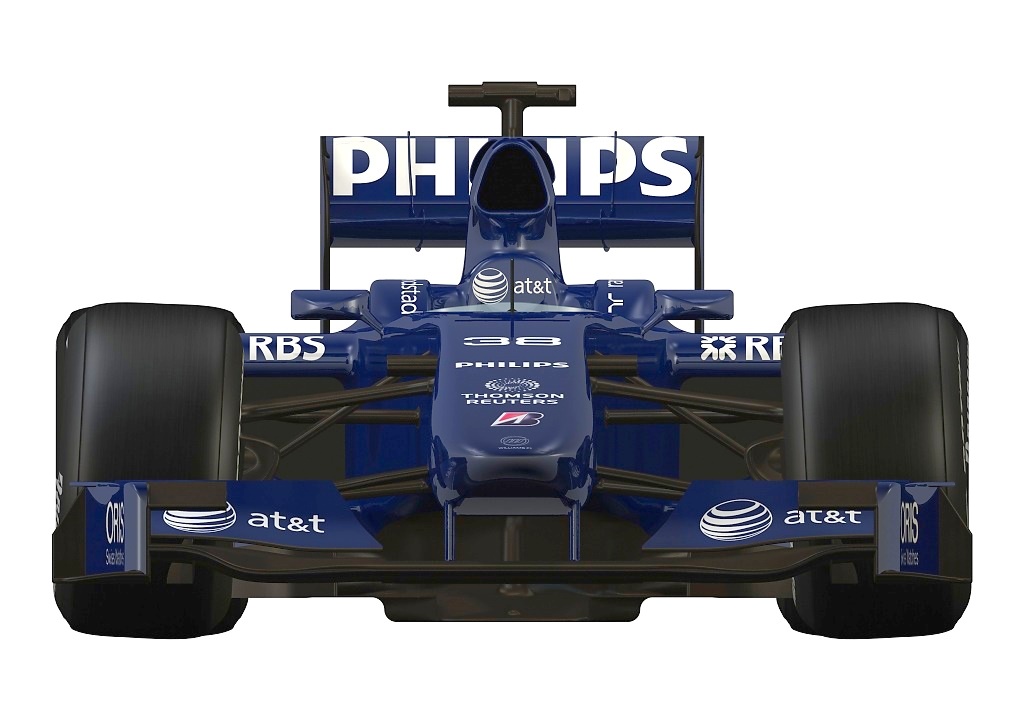 |
| Williams FW31 |
Williams unveiled their new 2009 car, the FW31, at the Algarve circuit in Portugal on Monday. Sporting their winter test livery, the new car features the expected low, long front wing and short, high rear wing in keeping with this year's F1 regulations.
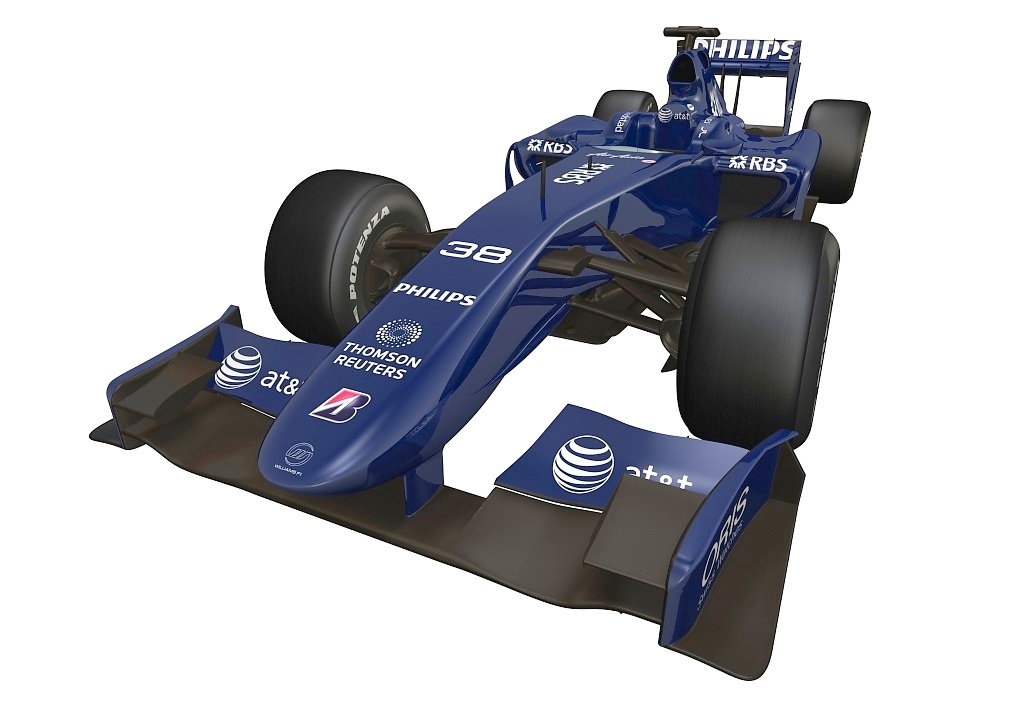 |
| Williams FW31 front wing |
After completing 17 laps this morning in the hands of AT&T Williams’ test driver, Nico Hülkenberg, the team was satisfied with initial progress. Technical Director, Sam Michael, said, “This morning has been full wet, but the weather hasn’t really affected what we wanted to do, because our goal has been to get the car out on track, check all the systems work, be sure parts aren’t touching each other, nothing is burning, and that’s all proved to be okay. It would be good to get some dry running, and the weather should allow this later in the week. In terms of first impressions of the car, we of course haven’t spent any time on set-up or performance work yet, that’ll all come later, but so far the car is running fine."
The Williams-Toyota FW31 is the first major clean-sheet car design for perhaps 30 years, driven by a wholesale change in Sporting and Technical Regulations.
The new Sporting Regulations are intended to increase car reliability and further reduce costs, while the changes to the Technical Regulations have three objectives – reducing the role of aerodynamics in the car’s performance, making overtaking easier and keeping lap times in check. These changes have had significant implications both on the appearance of this season’s race car and in shifting its performance baseline.
Sam Michael reflected, “The changes in the aerodynamic regulations are the most profound and will have the most impact on lap time. There are many immediate visual changes, but also many smaller reductions around the car through new regulation wording and exclusion zones. Starting at the front, the front wing end plate design has changed as the interaction with the front tire is completely different, and important to control. There are no longer large barge boards – although we managed to squeeze a small one in. The engine cover no longer has the traditional chimneys and louvers on top for cooling, and that has forced a higher and wider exit at the rear in order to provide an effective exit for hot air. Of course the re-introduction of slick tires is another significant change as it has an influence on the overall dynamics of the race car. Finally, of course, the introduction of KERS is another aspect to the technical picture for the year ahead."
Michael went on to explain how the changes in aerodynamic rules, which see a much reduced rear wing geometry and conversely, a considerably wider front wing profile, with the front wing flap angle adjustable by the driver in the cockpit, would be the competitive focus for all the teams for much of the year ahead. “Aerodynamics is likely to be the key to the first two thirds of the season ahead," he said, while rating the change to slick tires as another significant rule change for 2009. “Finding the optimum weight distribution to optimize tire performance will also be a high priority going into 2009 and KERS will be the next contributor to race performance. “ Michael confirmed.
The introduction of Kinetic Energy Recovery Systems (KERS) in 2009 is not an obligatory element of the regulations, but may provide an opportunity for teams to gain competitive advantage. The amount of energy that can be recovered and used may increase in future regulations, but the level set for the technology’s introductory year, set against considerations of weight and reliability, make the initial advantages less than gains to be achieved through aerodynamics and mechanical dynamics. Sam Michael contextualized this view, saying, “KERS in 2009 could be worth between 2/10ths and 3/10ths of a second per lap. However, once aero performance converges, KERS could start to become a greater performance differentiator and if the regulations give more scope to the technology, it could be worth anything up to a second a lap and it will be needed to win Grands Prix. The key decision for us with our system is to carefully balance the potential performance advantage with our ambition to improve an already strong reliability record from last season."
Nico Hülkenberg, the first of the AT&T Williams team drivers to experience the FW31 felt confident in the car’s abilities, but naturally reflected on the difference from its predecessors. “Straight away the new car feels okay, I feel comfortable in it and for a new car, we have also had a trouble-free morning technically, which is important. Of course everyone will want to know how it compares to the 2008 car and what the impact of the rule changes are from a driver’s point of view. In truth, I cannot say too much after a few laps, because the track is 100% new to me, I have never run here and also it is pretty wet, so I have no baseline for comparison – if we were at Jerez or Barcelona in the dry, I could be a little more specific. But the important thing for today is simply to make sure we run through all the checks of the basic systems on the car and confirm everything is working as it should. So far that is the case and we can be happy."
The front wing becomes lower (75mm from 150mm) and wider (up from 1400 to 1800mm – the same width as the car) with driver-adjust able flaps. Drivers will be allowed to make two wing adjustments per lap, altering the wing angle over a six-degree range.
The rear wing becomes taller (up 150mm to bring it level with the top of the engine cover) and narrower (750mm from 1000mm).Also at the back of the car, the diffuser has been moved rearwards, its leading edge now level with (rather than ahead of) the rear-wheel axle line. In addition, the diffuser has been made longer and higher, all changes that will reduce its ability to generate downforce.
Kinetic Energy Recovery Systems (KERS)
From 2009 teams have the option of employing a KERS to boost their car’s performance. As its name implies, a KERS recovers the (normally wasted) kinetic energy generated by the car’s braking process. This energy is stored using a mechanical wheel or an electrical battery and then made available to the driver, in set amounts per lap, via a ‘boost button’ on the steering wheel. Under the current regulations the power gain equates to around 80 horsepower, available for around seven seconds per lap. This could be worth several tenths of a second in terms of lap time, but the weight and packaging of the system – and its impact on the car’s weight distribution – also have to be taken into account.
Engines
In a move designed to boost reliability still further, rev limits will be cut from 19,000 to 18,000 rpm and drivers must now use the same 2.4-litre V8 engine for three, rather than two, consecutive events. Teams will be limited to 20 engines per season – eight for each race driver and an additional four for testing.
Aerodynamics
Along with slick tires, this is the biggest area of change for 2009. Downforce will be dramatically reduced and the cars’ bodywork will appear much cleaner, thanks to new dimensional regulations that effectively outlaw extraneous items such as barge boards, winglets, turning vanes and chimneys. As well as reducing overall aero performance, the revisions are also designed to increase overtaking by making the car less susceptible to turbulence when closely following another driver. The most obvious changes are to the front and rear wings. The front wing becomes lower (75mm from 150mm) and wider (up from 1400 to 1800mm – the same width as the car) with driver-adjustable flaps. Drivers will be allowed to make two wing adjustments per lap, altering the wing angle over a six-degree range. The rear wing becomes taller (up 150mm to bring it level with the top of the engine cover) and narrower (750mm from 1000mm) . Also at the back of the car, the diffuser has been moved rearwards, its leading edge now level with (rather than ahead of) the rear-wheel axle line. In addition, the diffuser has been made longer and higher, all changes that will reduce its ability to generate downforce.
Tires
After 11 seasons on grooved tires, Formula One racing returns to slicks in 2009, as part of moves to increase the emphasis on mechanical rather than aerodynamic grip. With no grooves, grip will increase by around 20 percent, bringing a significant performance gain. However, that gain will be offset by the vastly reduced downforce levels of the revised aerodynamic regulations (see below). The overall effect should be reduced performance through high-speed corners. Drivers will still have the choice of two dry tire compounds and will still have to use both compounds during a race.
As the AT&T Williams team took to the track in Portimão, the results of its commercial activities over the winter were apparent. The team has renewed or upgraded over ten partners since last summer when Philips confirmed that they were upgrading their partnership with the team. With the whole of Philips’ Consumer Lifestyle division now party to the partnership, Philips’ branding appears on the front-facing rear wing and on the FW31 sidepods.
Dominic Reilly, the team’s Head of Marketing, commented, “Philips has demonstrated, through its excellent track record of sponsorship execution, that their Formula One engagement has made a real difference to the bottom line. As a consequence, Philips have upgraded from the Shaving Division to the whole of its Consumer Lifestyle group. In consideration of this, Philips will have substantially increased livery on the 2009 race car."
Since announcing this new agreement in late 2008, a further nine agreements with existing partners have been signed, including Allianz, PPG, Oris, MAN and the recent announcement of another upgraded and extended agreement with Randstad, who now become one of the team’s senior partners as confirmed last week.
Adam Parr, Williams Chief Executive said, “We are very grateful for the loyalty and steadiness of purpose of our partners. We never take anything for granted, but our 2009 and 2010 budgets are in place thanks to the support of our partners as well as the increased revenues from FOM and the work being done by FOTA and the FIA to reduce costs. It is now our responsibility to make sure that our partners and the many other people who support the team enjoy a return on that investment."
Turning to the prospects for 2009, Frank Williams said, “It will be a very interesting year ahead. The new aero rules mean a different approach to the cars in a number of areas. However, by the time we get to Melbourne, I would expect the usual suspects to still be dominating the top two positions. More importantly, I hope Williams will have made a significantly large step forward with the FW31."
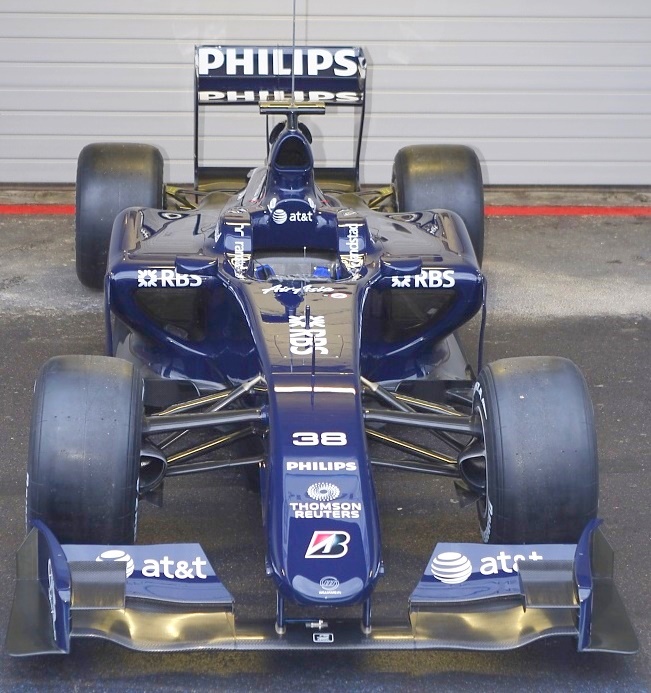 |
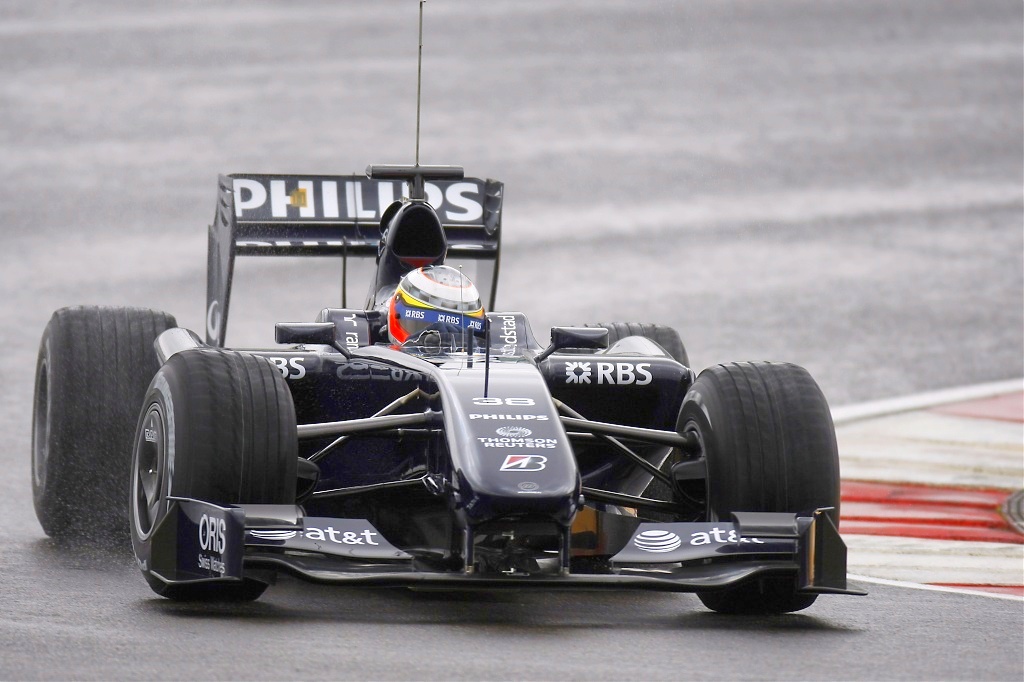 |
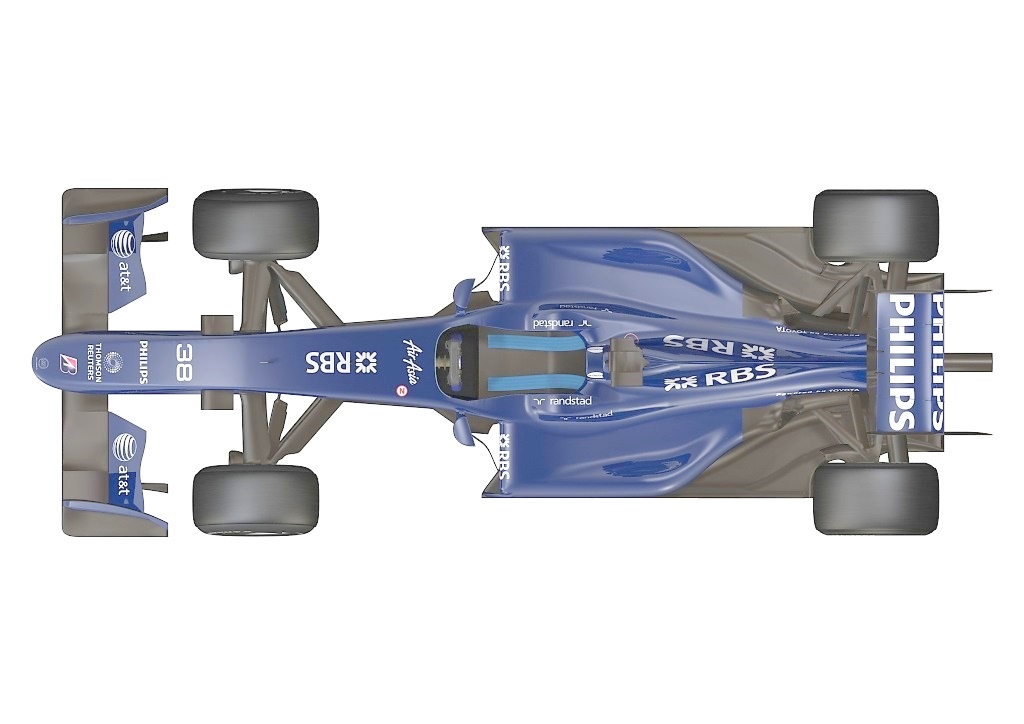 |
Technical Specifications
Chassis construction:
Monocoque construction fabricated from carbon aramid epoxy and honeycomb
composite structure, surpassing FIA impact and strength requirements
Front suspension:
Carbon fiber double wishbone arrangement, with composite toelink and
pushrod activated springs and anti-roll bar
Rear suspension:
Double wishbone and pushrod activated springs and anti-roll bar
Transmission:
Williams F1 seven speed seamless sequential semi-automatic shift plus
reverse gear in a aluminum maincase, gear selection electro-hydraulically
actuated
Clutch:
AP Carbon plate
Dampers:
Williams F1
Wheels:
RAYS forged magnesium
Tires:
Bridgestone Potenza, F 350mm wide, R 375mm wide
Brake system:
6 piston AP calipers all round, Carbon Industrie carbon discs and pads
Steering:
Williams F1 power assisted rack and pinion
Fuel:
system ATL Kevlar-reinforced rubber bladder
Electronic systems: MES
KERS:
Williams Hybrid Power’s patented Magnetic Loaded Composite flywheel system
Cooling system:
Marston oil, water, and gearbox radiators
Cockpit:
Driver six point safety harness with 75mm shoulder straps & HANS system,
removable anatomically formed carbon fiber seat covered in Alcantara.
Safety Devices extinguisher systems
Motive power:
Toyota 2.4L V8, 900 V angle, pneumatic valve train. Fuel management and
ignition systems by Toyota spark plugs by ND. Engine materials include
block and pistons in aluminum, crankshaft in steel billet, connecting
rods in titanium
Dimensions & weight:
Weight 605kg with driver, camera and ballast
Wheelbase: 3100mm / Length: 4800mm / Height: 950mm / Width: 1800mm
